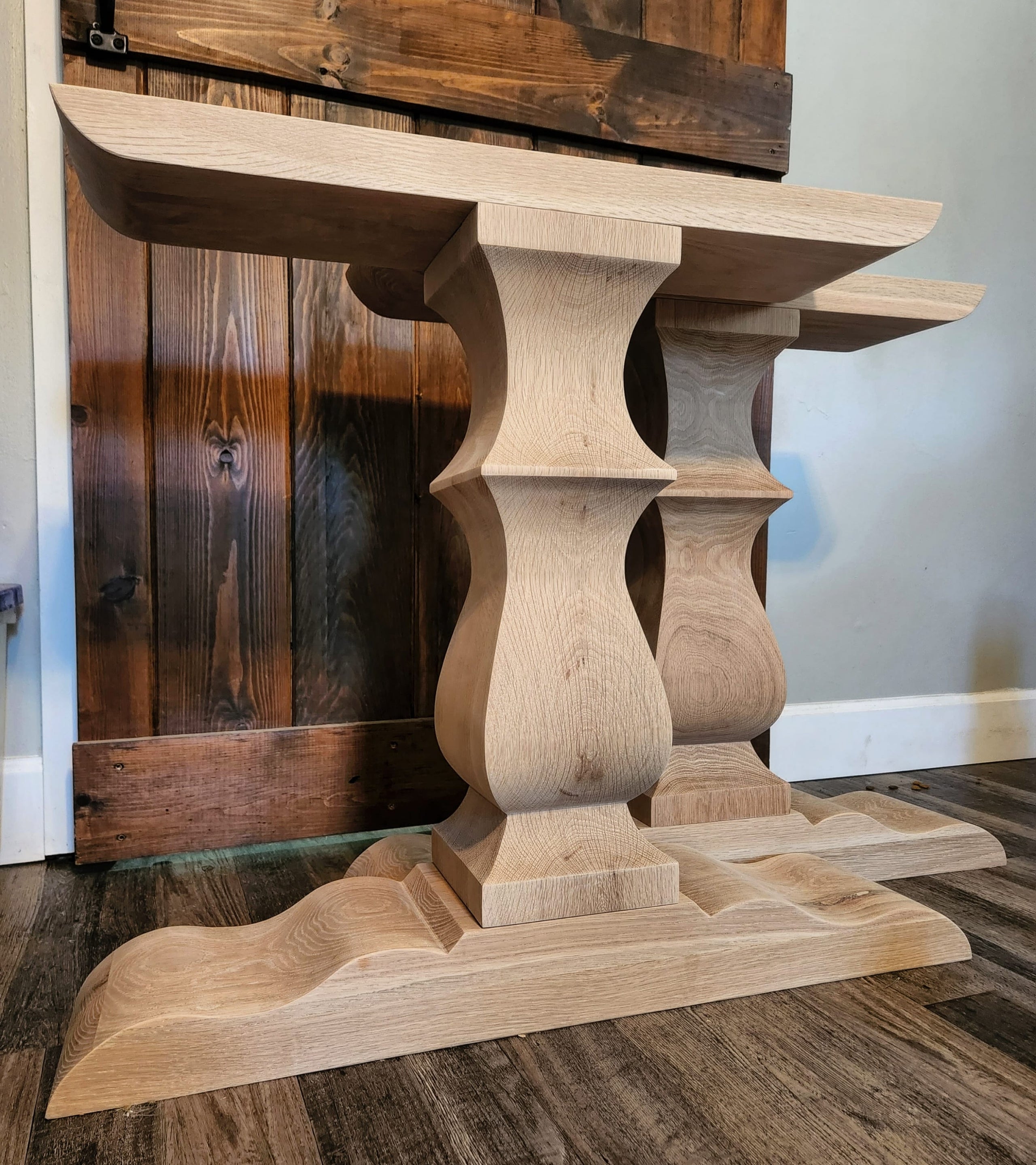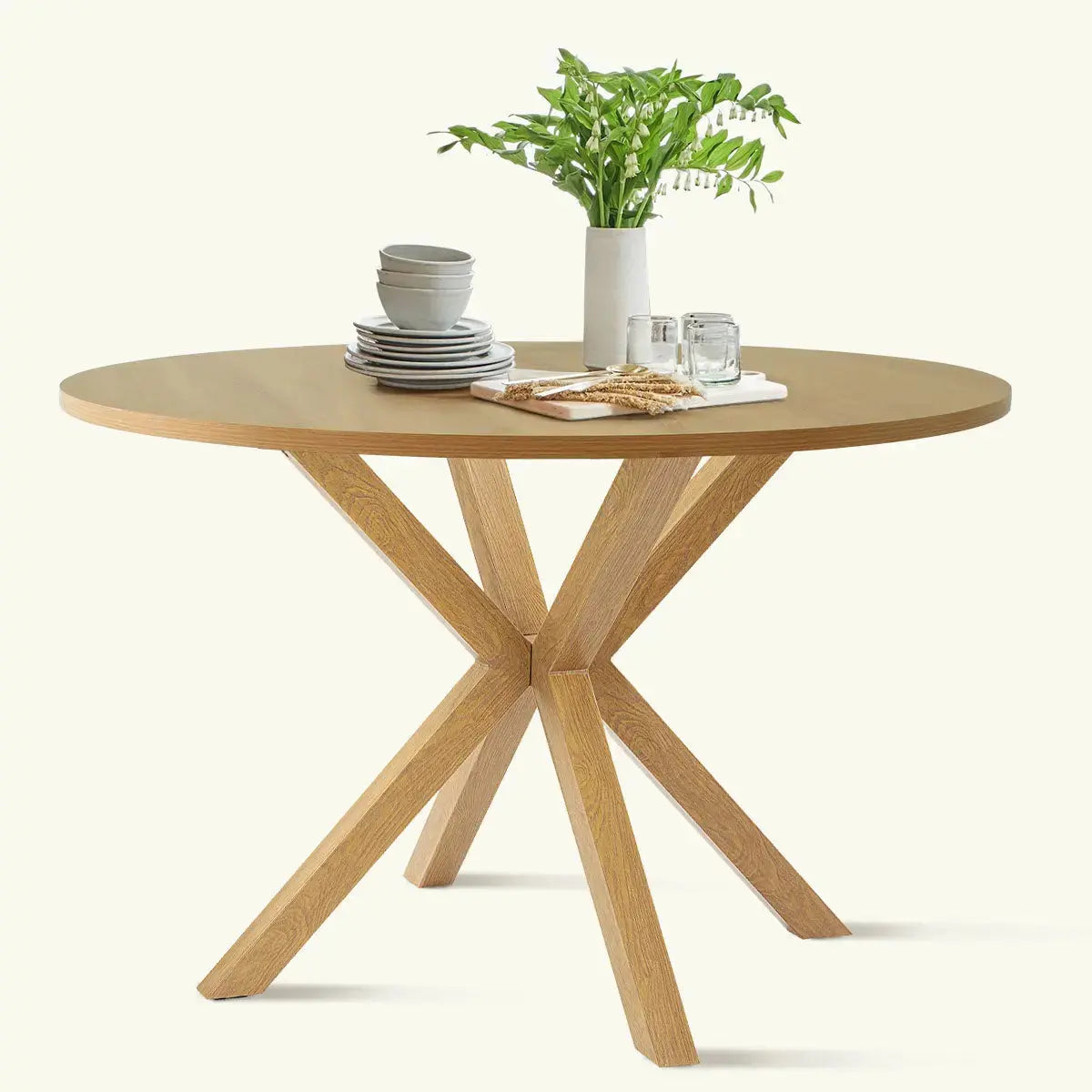From Typical to Modern: Discover the Ideal Dining-room Table Legs for Your Design
The selection of dining-room table legs plays a crucial function in defining the general character of your area, bridging the space between standard craftsmanship and modern-day aesthetic appeals. While classic layouts such as cabriole and turned legs evoke a feeling of ageless refinement, contemporary designs like hairpin and geometric choices present a chance for striking aesthetic interest. Reviewing the best equilibrium in between these styles needs a nuanced understanding of your existing décor and individual preference. As you think about these components, the question stays: just how can you seamlessly integrate these varied leg designs to create a harmonious eating experience?
Recognizing Table Leg Styles
The selection of dining-room table leg styles can considerably influence both the looks and capability of the room. Each leg style contributes unique aesthetic components and sensible attributes, satisfying diverse layout choices and use demands. Comprehending these styles is essential for selecting the right table that straightens with your general interior design vision.
As an example, conical legs use a clean, timeless appearance that can improve a room's style, while stand bases offer stability and take full advantage of legroom, making them optimal for smaller rooms. Hairpin legs, a hallmark of mid-century modern-day style, introduce a commercial style, enabling a ventilated, open feeling. Likewise, trestle legs evoke rustic beauty, offering durable support and a feeling of timelessness.
In addition, the option of products plays a considerable duty. Wooden legs can bring heat and structure, whereas steel options often communicate a sleek, modern vibe. Eventually, understanding table leg designs is essential for developing a cohesive dining location that reflects individual design while guaranteeing usefulness and comfort. By attentively taking into consideration these aspects, you can boost both the visual and practical appeal of your dining room.
Traditional Table Leg Options
When selecting dining space table legs, typical options frequently personify classic elegance and craftsmanship. These designs reflect an abundant heritage and a commitment to quality, making them optimal for those that value traditional appearances.
One of the most iconic conventional leg styles is the cabriole leg, characterized by its graceful curved shape. This design frequently features decorative carvings and is most commonly found in Queen Anne and Chippendale furniture. Another popular alternative is the transformed leg, which flaunts a collection of smooth, rounded forms that supply a traditional look while preserving stability.
Furthermore, the straight leg, while simple, offers a basic and strong structure that can blend seamlessly with a selection of tabletop designs. For those attracted to ornate describing, claw-and-ball feet legs evoke a sense of grandeur and can offer as a magnificent centerpiece in any kind of dining space.
Last but not least, stand bases, although not strictly legs, provide an alternate traditional option that enables adequate legroom and can be beautifully carved. Each of these traditional leg designs contributes to the general atmosphere of an eating area, weding feature with aesthetic appeal.

Modern Table Leg Designs
Modern table leg designs supply a diverse array of styles that highlight ingenious materials and clean lines. These designs typically prioritize capability while acting as striking centerpieces within a dining area. Minimal appearances are widespread, with legs crafted from materials such as metal, glass, and engineered wood, which add to a modern and airy feeling.
One popular layout is the look at more info hairpin leg, characterized by its slender, tapered structure that offers stability without frustrating the tabletop (dining room table legs). This style is frequently located in mid-century modern-day furnishings and can easily complement numerous eating table shapes. One more pattern is the use of geometric forms, where legs may take on unbalanced or angular forms, including aesthetic interest and a touch of virtuosity

Mixing Designs for Distinct Areas
Usually, house owners Resources seek to create unique dining rooms that reflect their personal design by blending numerous style components. This strategy permits the consolidation of diverse visual appeals, causing a harmonious yet distinctive setting. For example, pairing a rustic wooden table with sleek, contemporary metal legs can develop a distinctive contrast that boosts the room's overall allure.
Furthermore, incorporating vintage table legs with contemporary tabletops can evoke a feeling of background while keeping a modern perceptiveness. Such mixes not just showcase individual taste however additionally motivate creative thinking, enabling homeowners to curate a space that feels both personal and welcoming.
Color plays a vital role in this mixing process; choosing table legs that enhance or comparison with the existing color scheme can enhance aesthetic passion. As an example, whitewashed legs can soften the boldness of a dark table surface, developing a well balanced visual.
Tips for Choosing the Right Legs
Choosing the right table legs is vital for achieving both performance and visual charm in your dining room. Begin by considering the total style of your room. Conventional settings take advantage of legs that include detailed carvings or transformed designs, while contemporary spaces might require sleek, minimal styles.
Next, examine the elevation and security of the legs. dining room table legs. Conventional table range in between 28 to 30 inches in height, so ensure the legs complement this measurement for convenience. Additionally, durable materials, such as wood or steel, can improve security and long life
Assess the leg shape as well-- alternatives include directly, tapered, or stand styles. Straight legs supply a timeless appearance, while conical legs can add a touch of beauty. Pedestal bases provide sufficient legroom and are excellent for smaller areas.
Final Thought
In recap, picking the excellent eating area table legs needs cautious consideration of both modern and traditional designs. Typical alternatives such as cabriole and transformed legs provide timeless elegance, while modern-day layouts like hairpin and geometric shapes provide a modern touch. By balancing leg style, height, and product with the general decoration, a cohesive and welcoming environment can be achieved. Ultimately, the picked table legs ought to reflect the wanted visual, enhancing the eating experience within the area.
The selection of dining area table leg styles can significantly affect both the looks and functionality of the room. Ultimately, recognizing table leg styles is crucial for producing a natural dining location that mirrors personal design while ensuring functionality and convenience.One of the most renowned typical leg styles is the cabriole leg, defined by its elegant curved form. Straight legs supply a traditional appearance, while conical legs can include a touch of style.In summary, choosing the ideal dining space table legs calls for careful factor to consider of both contemporary and typical designs.